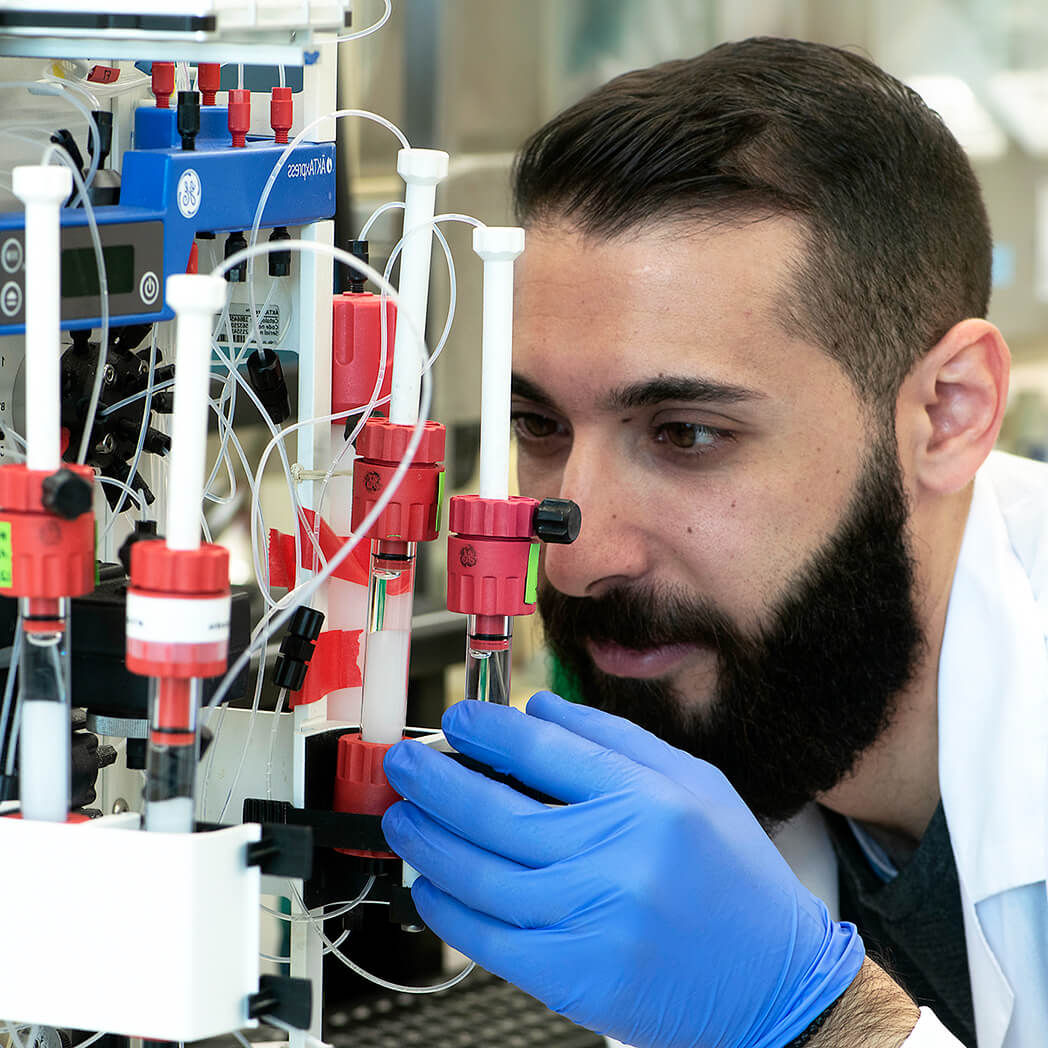Overview
|
| Bioz Stars Product Rating | |
| The world's only objective ratings for scientific research products | |
| Mentions | |
| Recency | |
| View product page > | |
Cat #:
STC-850
Purity: >98% (HPLC)
MW: 2915 Da
Form: Lyophilized
ω-Conotoxin RVIA (#STC-850) is a highly pure, synthetic, and biologically active peptide toxin.
MW: 2915 Da
For research purposes only, not for human use
Applications
Our Bioassay
Our bioassay
 Alomone Labs ω-Conotoxin RVIA inhibits CaV2.2 channels expressed in Xenopus oocytes.A. Representative time course of ω-Conotoxin RVIA (#STC-850) inhibition of CaV2.2 maximum current. Membrane potential was held at -100 mV, current was elicited by a 100 ms voltage ramp to +60 mV every 10 sec, and was significantly inhibited by application of 0.5 µM ω-Conotoxin RVIA (top horizontal bar). B. Superimposed traces of CaV2.2 current after the application of control and 0.5 µM ω-Conotoxin RVIA (as indicated). Taken from experiment in A.
Alomone Labs ω-Conotoxin RVIA inhibits CaV2.2 channels expressed in Xenopus oocytes.A. Representative time course of ω-Conotoxin RVIA (#STC-850) inhibition of CaV2.2 maximum current. Membrane potential was held at -100 mV, current was elicited by a 100 ms voltage ramp to +60 mV every 10 sec, and was significantly inhibited by application of 0.5 µM ω-Conotoxin RVIA (top horizontal bar). B. Superimposed traces of CaV2.2 current after the application of control and 0.5 µM ω-Conotoxin RVIA (as indicated). Taken from experiment in A.
Citations (180)
Citations
Specifications
Properties
Technical Specifications
Origin Synthetic peptide
MW 2915 Da
Sequence CKPXGSXCRVSSYNCCSSCKSYNKKCG.
Modifications Disulfide bonds between Cys1-Cys16, Cys8-Cys19, Cys15-Cys26. X = Hydroxyproline.
Peptide Content 100%
Purity >98% (HPLC)
Molecular formula C116H182N36O40S6.
Accession number P58914.
Biological Activity
Target CaV2.2 Ca2+ channels
Effective concentration 1-5 µM.
Activity CaV2.2 channel blocker1.
References
- Abbott, J.R. and Litzinger M.J. (1994) Int. J. Devl. Neuroscience 12, 43.
Solubility and Storage
Shipping and storage Shipped at room temperature. Product as supplied can be stored intact at room temperature for several weeks. For longer periods, it should be stored at -20°C.
Solubility Any aqueous buffer. Centrifuge all product preparations before use (10000 x g 5 min).
Storage of solutions Up to two weeks at 4°C or three months at -20°C.
Scientific Background
References
Scientific background
ω-Conotoxin RVIA is a 27 amino acid peptidyl toxin, originally isolated from the Conus radiatus (Rayed cone)1 venom and is a synthetic version of the peptide.
This peptide acts at presynaptic membranes by binding and blocking voltage-gated Ca2+ channels (CaV2.2)2.
References
- Olivera, B.M. et al. (1994) Annu. Rev. Biochem. 63, 823.
- Abbott, J.R. and Litzinger M.J. (1994) Int. J. Devl. Neuroscience 12, 43.
Last Update: 08/01/2025

